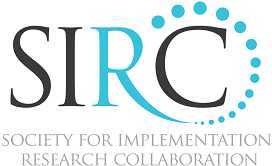Symposium 2 – May 16, 2013
1. Transforming Organizations Using Evidence-based Leadership Development
Presentation Slides Video of Presentation
Presenter: Bruce J. Avolio, PhD
Authors: Bruce J. Avolio, PhD, Marion B. Ingersoll Professor, Executive Director, Center for Leadership & Strategic Thinking, Michael G. Foster School of Business, University of Washington
Abstract: The focus of my presentation will be on examining the various sources of leadership and how those sources are transmitted and contribute to or detract from individual, unit and organizational transformation. Today, the source of leadership is recognized as not being just associated with the designated or formal leader. Indeed, the source of leadership can be a group or even a crowd! Moreover, leadership is now being distributed throughout organizations, communities and nation states in ways that are creating opportunities for fundamental change in the way we configure our institutions and lead them in the 21st century, including for profit, not for profit, government agencies.
Participants can expect to learn the following from our discussion:
- Where does their leadership come from and how can it be effectively transmitted.
- How the source and transmission of leadership can drive more ownership at all organizational levels.
- What it means to consider the total leadership system in one’s organization and its development when engaging in organizational transformation.
- One insight that each participant can apply to his or her own leadership development.
2. Taking a Lesson from Usual Care: Predictors of Use of Evidence-Based Practices for Youth
Presentation Slides Video of Presentation
Presenter: Charmaine K. Higa-McMillan, PhD
Authors: Charmaine K. Higa-McMillan, PhD,1 Ashley Usita, MA,1 & Brad J. Nakamura, PhD2
1University of Hawaii at Hilo; 2University of Hawaii at Manoa
Abstract: A growing body of research suggests that in addition to examining adoption of evidence-based psychosocial interventions (EBPIs), studying practices in usual care might be a complimentary approach to solving a number of implementation research dilemmas. In a recent study of usual care for youth with disruptive behavior problems, Brookman-Frazee, Garland, et al. (2010) found few youth, family, and therapist characteristics that predicted use of EBPIs. The current study expanded on these findings by examining therapists (N=74) providing services for youth with anxiety, trauma, depressive, attentive, and disruptive behavior problems (N=514) in a large public mental health system. Using multilevel modeling, this study examined therapist-level characteristics (e.g., training background, theoretical orientation) that predict use of EBPIs after accounting for child-level characteristics (e.g., age, gender, diagnosis, functional impairment, episode length). Results suggest that while no child-level characteristics predict therapist use of EBPIs, child age, gender, functional impairment at episode start, and service type predict use of practices that do not have a strong evidence-base. Further, while most therapist characteristics do not predict use of EBPIs, theoretical orientation accounts for a significant amount of variance in provider use of EBPIs with youth in usual care. Implications for implementation research will be discussed.
